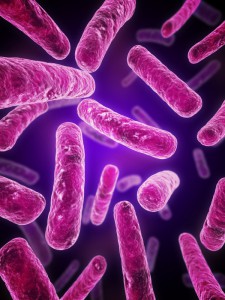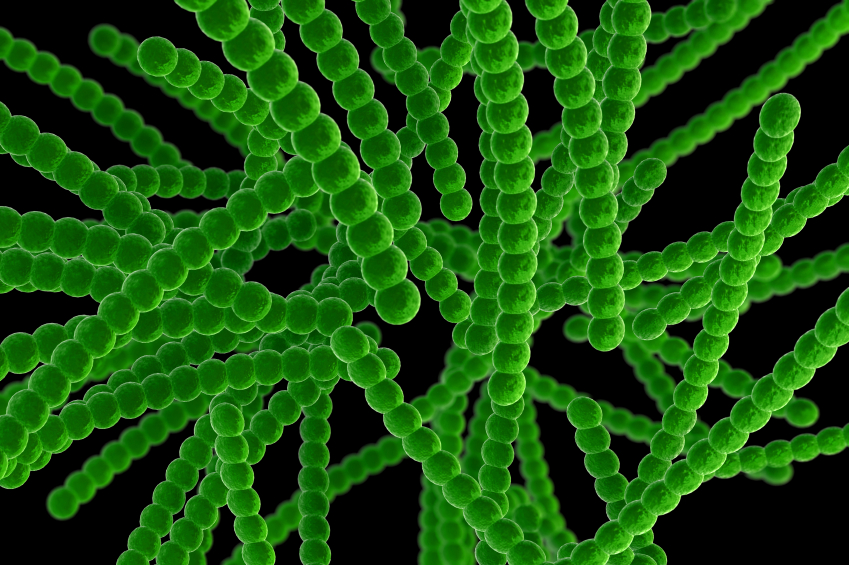
Did you know that the microorganisms living in and on the human body (most on the skin, in the gut, and in the mouth) outnumber all our human cells by a factor of ten? But read on before you grab the hand sanitizer and schedule a colonic, these “germs” may be an integral part of what makes you… well “you”. Indeed, the profile of microorganisms happily living in and on your body may be as unique a signature as your DNA profile or your fingerprints—perhaps more so.
I had just got used to the genome, and was contemplating the complexity of the proteome, when I heard about the microbiome. Collectively, the microorganisms that colonize the human body are known as the microbiota, and the microbiome is the genetic information represented by these populations. In recent years, the NIH Human Microbiome Project and the European Commission Metagenomics of the Human Intestinal tract (MetaHIT) program, an international research initiative akin to the Human Genome project, have begun the task of unraveling the complexity of the human microbiota, with a view to characterizing these microbial populations on a genetic level and eventually understanding how they contribute to human health and disease (1).
Many of the organisms involved are difficult/impossible to culture. Advances in bioinformatics, sequencing technologies and PCR mean that genetic information from individual species can be pieced together from DNA fragments amplified from an entire population of organisms (2,3). Common primers directed against bacterial 16s rRNA sequences are used to amplify DNA from an entire population, which is then sequenced and the information on specific genes and sequences assembled. There is no longer any need to culture individuals (4).

Here is my list of intriguing research findings related to the microbiome project:
People can be identified based on their microbial colonists. My interest in the microbiome was sparked by a recent PNAS paper (5) which raised the (to me) astounding possibility of individual identification based on analysis of skin-associated bacteria left on surfaces. In the study the bacterial communities left on keyboards and computer mice were characterized and the information used to accurately identify the keyboard owners. The authors point out that this is a preliminary study, and more work is required to validate these results with traditional forensic methods, such as fingerprint analysis and DNA-typing. However, it is surprising how the composition of skin associated bacterial communities can be variable and diverse enough to allow differentiation between people. I must admit that before reading this paper, I thought that everyone would have a pretty similar range of common environmental bacteria on their hands. Importantly for this application, skin communities are also quite stable over time and reestablish themselves within hours of hand washing (2).
Identical twins harbor different microbial communities. A study of gut bacterial populations in identical and non-identical twins suggested the following intriguing possibility:
The collective genomes of our microbial symbionts may be more personally identifying than our own genomes (5)
Turnbaugh et al (6) characterized the gut microbiota of identical and nonidentical twins and found that the gut microbiome is similar among family members but the species present vary by individual. The variability was the same whether twins were identical or not. No more easy crime sprees by evil identical twins if the same holds true for skin organisms.
Sometimes you may want a few extra bacteria. New babies and gut transplant patients provide researchers with opportunities to observe how the gut is colonized and how the gut population initially develops. Studies of both transplant patients and new babies reveal that the gut microbiota of each individual is unique and dynamic. Until recently donor intestines were treated with antibiotics to eliminate bacteria before transplant. However, the more antibiotics used, the more unwanted intestinal infections occur after transplant. Early results suggest that transplant patients who receive a gut complete with its normal complement of bacteria, actually do better than those who receive a completely clean organ (7).
Perhaps the most shocking statement about the microbiome is from a 2007 paper (4):
If humans are thought of as a composite of microbial and human cells, the human genetic landscape as an aggregate of the genes in the human genome and the microbiome, and human metabolic features as a blend of human and microbial traits, then the picture that emerges is one of a human supra-organism.
Aargh. That last thought is too much for me! I don’t think I’m ready to be redefined as a symbiotic organism — a walking community. Maybe I will go and wash my hands after all, if only as a temporary gesture.
References
- Qin, J. et al. (2010) A human gut microbial gene catalogue established by metagenomic sequencing. Nature 464, 59-65.
- Fierer, N., et al. (2008) The influence of sex, handedness and washing on the diversity of hand surface bacteria. Proc. Natl. Acad. Sci. USA 105, 17994-9.
- Lozupone, C., and Knight, R. (2005) UniFrac: a new phylogenetic method for comparing microbial communities. Appl. Env. Microbiol. 71, 8228-35.
- Turnbaugh, P.J., et al. (2007) The Human Microbiome project. Nature 449, 804-10.
- Fierer. N., et al. (2010) Forensic identification using skin bacterial communities. Proc. Natl. Acad. Sci. March 15, 2010. (www.pnas.org/cgi/doi/10.1073/pnas.1000162107
- Turnbaugh, P., et al. (2009) A core gut microbiome in obese and lean twins. Nature 457, 480-4.
- Straight from the gut. (2008) Nature 453, 581-2.
Isobel Maciver
Latest posts by Isobel Maciver (see all)
- 3D Cell Culture Models: Challenges for Cell-Based Assays - August 12, 2021
- Measuring Changing Metabolism in Cancer Cells - May 4, 2021
- A Quick Method for A Tailing PCR Products - July 8, 2019
